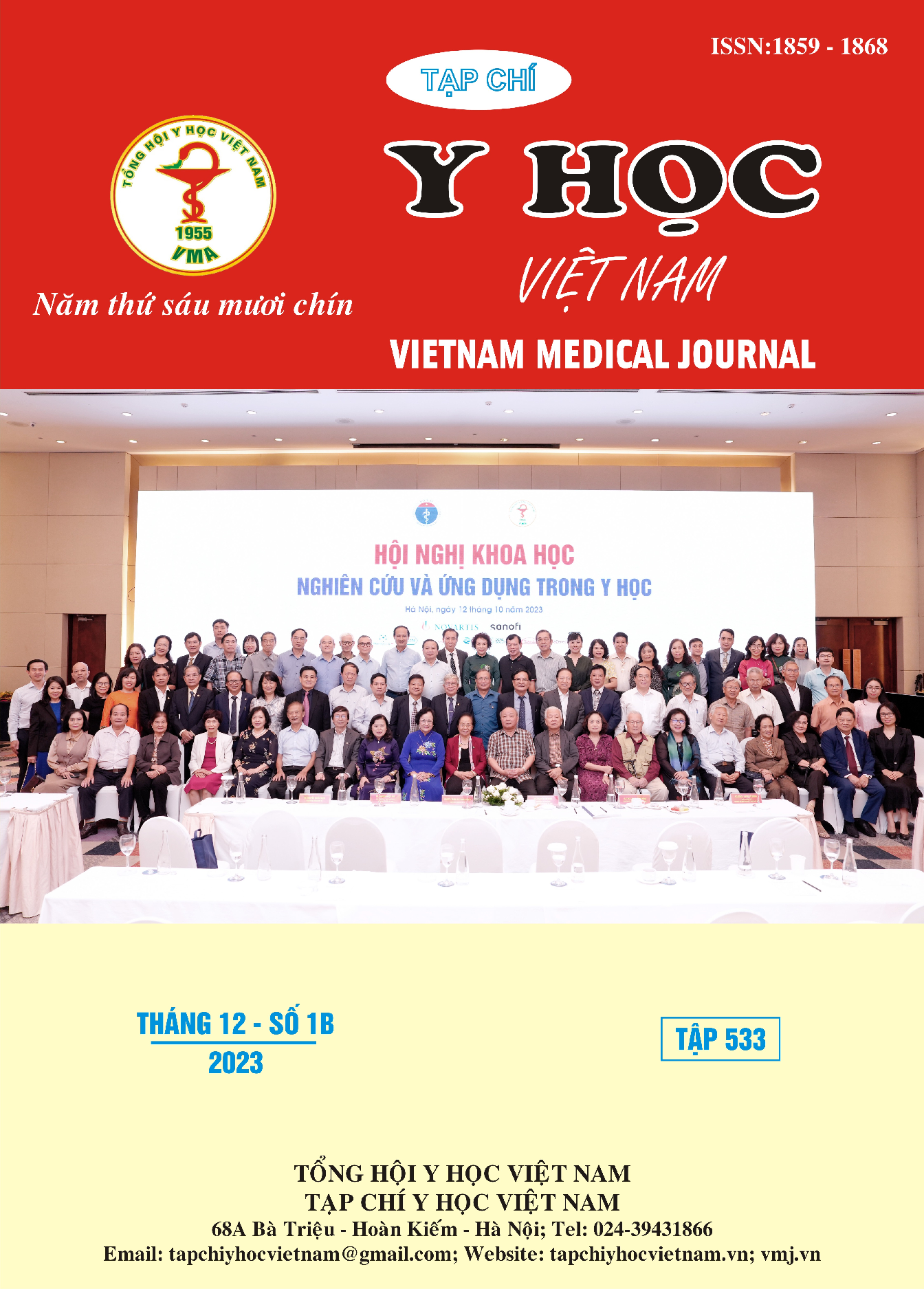SOME FACTORS RELATED TO OUTCOME OF PEDIATRIC CARDIOPULMONARY RESUSCITATION IN VIETNAM NATIONAL CHILDREN’S HOSPITAL
Main Article Content
Abstract
Cardiac arrest in children is an urgent emergency, has a high mortality rate, often leaves many sequelae and can lead to lifelong neurological sequelae. Although the development of medical science in general and emergency technology in particular has increasingly saved the lives of many pediatric patients, the death rate due to in-hospital cardiac arrest in infants and children is about 65%. In order to contribute to increasing the effectiveness of emergency treatment for pediatric patients and minimizing future neurological sequelae, the study was conducted. Objective: To identify some factors related to outcome of pediatric cardiopulmonary resuscitation (CPR) in Vietnam National Children’s Hospital. Methods: Cross-sectional descriptive study: prospective and retrospective. Results: The study on 203 patients qualified for the study found that: age < 1month, cardiovascular disease history, severe conditions before cardiac arrest such as mechanical ventilation, arrhythmia, abnormalities on echocardiography, severe metabolic acidosis and hypoxemia (pH < 7.0, lactat > 6.5 mmol/l và PaO2 < 60 mmHg). Coagulation disorders (PT < 70%, Fib < 1 g/l), hyperkalemia, duration of CPR and number of and number of vasopressors maintained after CPR. Conclusion: The results of pediatric emergency cardiac arrest are influenced by many factors, so it is necessary to treat and consider all related factors to contribute to increasing the effectiveness of emergency care for pediatric patients and minimizing the following neurological sequelae.
Article Details
References
2. Morrison LJ, Neumar RW, Zimmerman JL et al. Strategies for Improving Survival After In-Hospital Cardiac Arrest in the United States: 2013 Consensus Recommendations: A Consensus Statement from the American Heart Association. Circulation. 2013;127(14):1538–63.
3. Lee, J, Yang, Lee, E.-P, et al. (2019). Clinical survey and predictors of outcomes of pediatric out-of-hospital cardiac arrest admitted to the emergency department. Scientific reports. 9(1), 1-9.
4. Assar, S., Husseinzadeh, M., Nikravesh, A.H., et al. (2016). The success rate of pediatric in-hospital cardiopulmonary resuscitation in Ahvaz training hospitals. Scientifica. 2016(1), 1-8.
5. Jamme, M., Salem, O.B.H., Guillemet, L., et al. (2018). Severe metabolic acidosis after out-of-hospital cardiac arrest: risk factors and association with outcome. Annals of intensive care. 8(1), 1-8.
6. Adrie, C., Monchi, M., Laurent, I., et al. (2005). Coagulopathy after successful cardiopulmonary resuscitation following cardiac arrest: implication of the protein C anticoagulant pathway. Journal of the American College of Cardiology. 46(1), 21-28.
7. Del Castillo, J., López-Herce, J., Matamoros, M., et al. (2012). Hyperoxia, hypocapnia and hypercapnia as outcome factors after cardiac arrest in children. Resuscitation. 83(12), 1456-1461.
8. Yurtseven, A., Turan, C., Akarca, F.K., et al. (2019). Pediatric cardiac arrest in the emergency department: Outcome is related to the time of admission. Pakistan journal of medical sciences. 35(5), 1434.
9. Jayaram, N., Spertus, J.A., Nadkarni, V., et al. (2014). Hospital variation in survival after pediatric in-hospital cardiac arrest. Circulation: Cardiovascular Quality and Outcomes. 7(4), 517-523.
10. Ortmann, L., Prodhan, P., Gossett, J., et al. (2011). Outcomes after in-hospital cardiac arrest in children with cardiac disease: a report from Get With the Guidelines–Resuscitation. Circulation. 124(21), 2329-2337.


